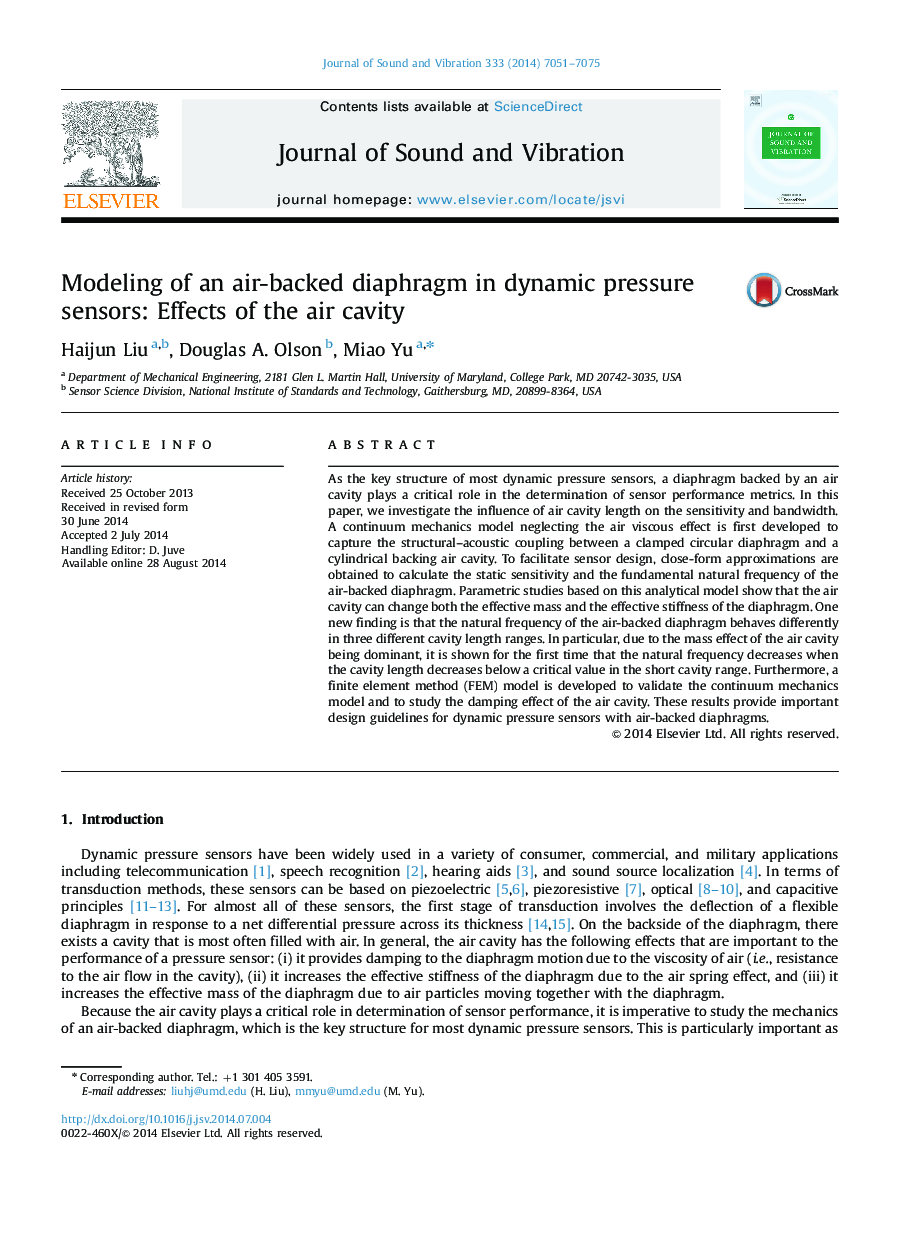| Article ID | Journal | Published Year | Pages | File Type |
|---|---|---|---|---|
| 287436 | Journal of Sound and Vibration | 2014 | 25 Pages |
As the key structure of most dynamic pressure sensors, a diaphragm backed by an air cavity plays a critical role in the determination of sensor performance metrics. In this paper, we investigate the influence of air cavity length on the sensitivity and bandwidth. A continuum mechanics model neglecting the air viscous effect is first developed to capture the structural–acoustic coupling between a clamped circular diaphragm and a cylindrical backing air cavity. To facilitate sensor design, close-form approximations are obtained to calculate the static sensitivity and the fundamental natural frequency of the air-backed diaphragm. Parametric studies based on this analytical model show that the air cavity can change both the effective mass and the effective stiffness of the diaphragm. One new finding is that the natural frequency of the air-backed diaphragm behaves differently in three different cavity length ranges. In particular, due to the mass effect of the air cavity being dominant, it is shown for the first time that the natural frequency decreases when the cavity length decreases below a critical value in the short cavity range. Furthermore, a finite element method (FEM) model is developed to validate the continuum mechanics model and to study the damping effect of the air cavity. These results provide important design guidelines for dynamic pressure sensors with air-backed diaphragms.
